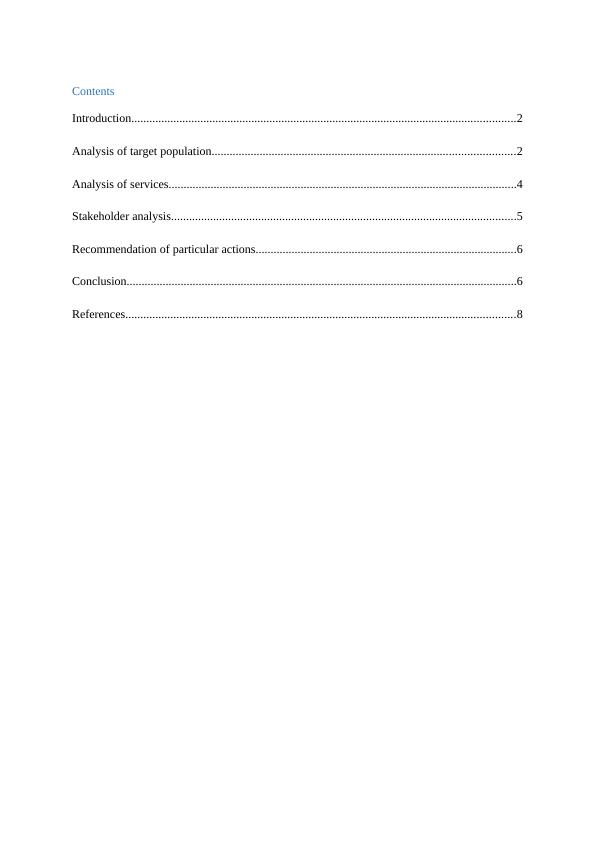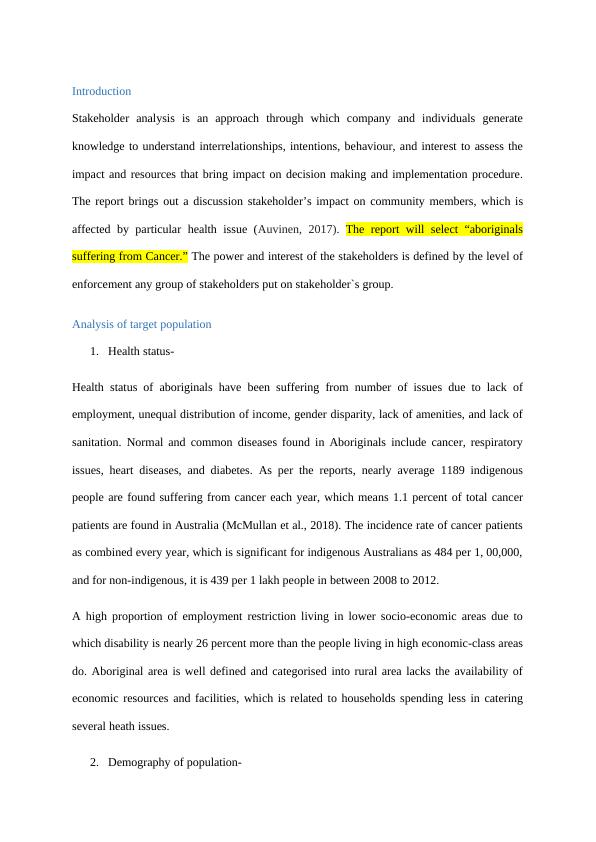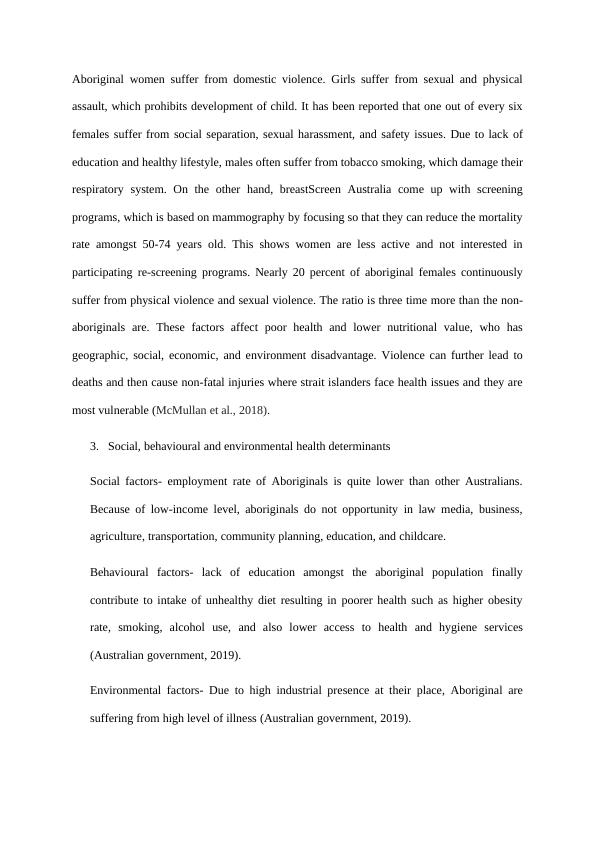Health Impact Fund in India
Identify and analyze stakeholders involved in a needs assessment for binge drinking in young adults in NSW.
12 Pages2213 Words18 Views
Added on 2022-09-06
Health Impact Fund in India
Identify and analyze stakeholders involved in a needs assessment for binge drinking in young adults in NSW.
Added on 2022-09-06
ShareRelated Documents
End of preview
Want to access all the pages? Upload your documents or become a member.
Australian Aboriginal Women's Health Issues
|5
|1099
|14
Policy, Power and Politics: A Critical Analysis of NSW Aboriginal Health Plan of 2013-2023
|17
|4592
|129
Vulnerable Populations and Advocacy
|10
|3206
|78
Social Determinants of Health docx
|8
|1791
|33
Contemporary Indigenous Health and Well-being | Essay
|8
|2220
|524
Lung Cancer in Indigenous Australians and Torres Strait Islanders
|7
|1659
|34




